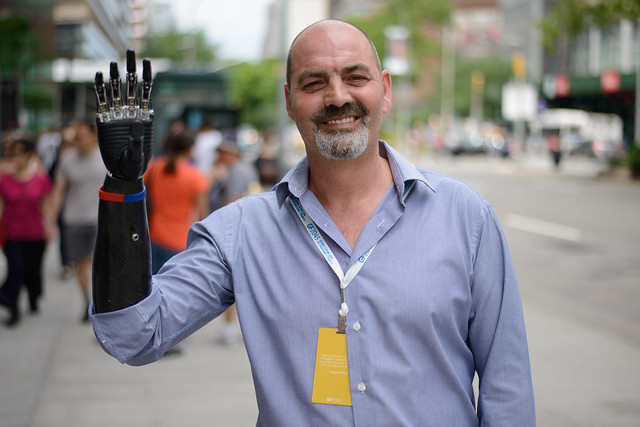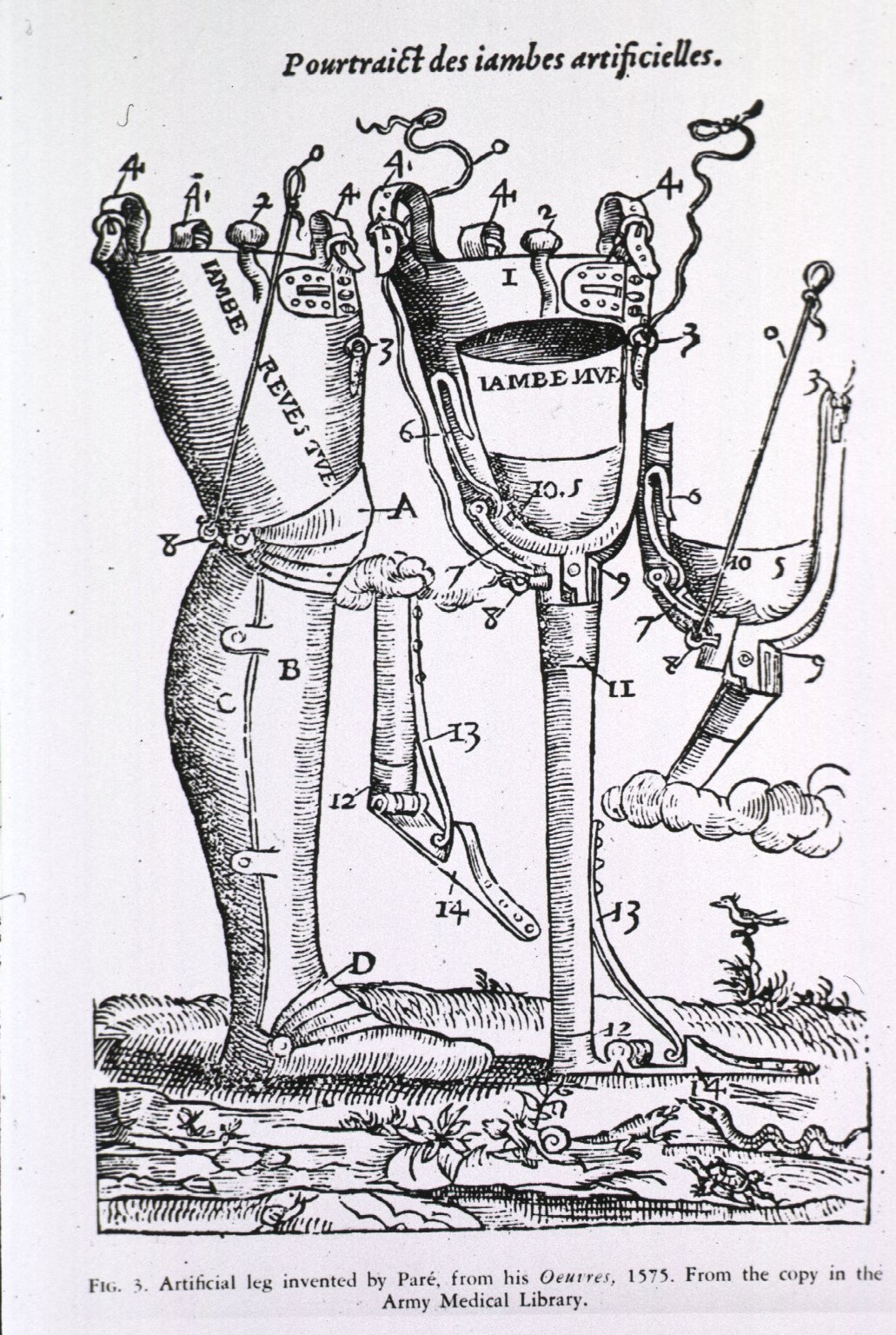It's not often you see a duck with a prosthesis, but one Buttercup the duck has a new foot. Buttercup, whose mobility was hindered by a foot deformity, can now swim and waddle without discomfort thanks to a new silicone foot made with 3D modeling.According to the duck’s Facebook page, Tennessee-based company NovaCopy made a model of Buttercup’s sister’s foot. That model was then printed as a mold and filled with flexible silicone. The resultant prosthetic was attached to the duck’s remaining limb via a custom fitted sock and a nylon retaining screw.While those less impressed with this story might say, “it’s just a duck,” the technology involved in Buttercup’s triumph brings to light how far we’ve come in the rapidly diversifying world of artificial limbs. New technology and multidisciplinary approaches are bringing sweeping changes to a field that formerly only moved in fits and starts.The oldest known prostheses are two toes belonging to Egyptian mummies. While it was common for mummies to be affixed with replacement body parts in death, wear and tear on these toes implies that they were used functionally during life.Despite the early acknowledgement of the desire for artificial limbs, prosthetic advancement was relatively static for many millennia. Sporadic innovations were made, but clumsy metallic and wooden limbs remained the norm.It wasn’t until Ambroise Paré, one of a crew of terrifying multitaskers called barber surgeons, came along in the mid-1500s that prosthetics moved from simply masking a missing limb to adding a degree of functionality. His innovations included specialized harnesses for attachment as well as hands and legs with more natural hinges and locking capabilities.
Another forefather of modern prosthetic tech was Dutch surgeon Peter Verduyn who, in 1696, developed the first non-locking below-knee prosthetic. Over three hundred years later, his invention remains important in contemporary artificial limb research and production.Paré and Verduyn’s accomplishments evolved further during times of war. In the United States, the corporeal destruction of the Civil War prompted the government to offer financial support for prosthetic development through the enthusiastically named Great Civil War Benefaction. Hanger, Inc., a leader in the field of prosthetic care that provided Aaron Ralston of 127 Hours fame with a new limb, dates back to this era. In fact, its founder James Edward Hanger was the first amputee of the Civil War.A similar pattern followed in the aftermath of World War II as the National Academy of Sciences established the Artificial Limb Program to oversee a multidisciplinary approach to limb design. Since then, experts from various fields including engineering, robotics, design, and physiology have collaborated to make prosthetics that not only replace missing limbs, but in some cases, are definitely much cooler than their fleshy forebears.Prosthetics are a great focal point to examine the interface between technology and biology. At Motherboard, we’ve previously talked about 3D printed ears and mind-controlled robotic limbs for quadriplegics. We’ve also talked to self-proclaimed “fembot” Amy Purdy about her relationship to her robotic legs. But even in the last several months, a slew of new developments and uses have revolutionized the ways in which we think about artificial limbs.One of the major realms of development is, unsurprisingly, the ubiquitous world of 3D printing and modeling. As in Buttercup’s case, these processes allow us to be able to make precise models of the body parts we are replacing which can assist with both functionality and appearance.The success stories are growing. Eric Moger received a lifelike silicone mask to cover the part of his face that was removed in surgery four years ago. An elderly woman has a new jaw to replace her old badly infected one. And Beauty the bald eagle has a new functional upper mandible so she can finally eat, drink, and preen her feathers again. While it’s alright to be skeptical of the notion that 3D printing can change the world, it’s certainly a viable path to explore for future medical innovations.But enough about 3D printing and onto another world in which prosthetic strides are being made: the science of neural and peripheral interfacing. With neural interfacing, the brain and nerves are communicating directly to move a prosthetic. While this might seem ideal, organizations like DARPA are still wary of the invasive nature and ultimate viability of the procedure. Peripheral interfacing, whereby another body part is used to convey messages from the brain to an artificial limb, is the better option for now. In its simplest form (relatively speaking, of course), interfacing with a prosthesis can work like Nigel Ackland's incredible bebionic3 prosthesis, which can rotate and grip like, well, a robot hand. It's controlled by fine movements of his arm muscles, and as my colleagues at Motherboard found, it's surprisingly agile.Targeted muscle reinnervation, or TMR, is an example of this. After a limb is amputated, electrical signals from the brain are shuttled down peripheral nerves, but have nowhere to go. They hit a dead end. But these signals can be surgically redirected to healthy muscle. Electrodes can then read the electrical activity in the muscle and provide the appropriate signals to a prosthetic.The video below shows TMR in action. Glen Lehman, a former Army staff sergeant who was injured in Iraq, uses his robotic limb to drink, grab a tennis ball, and catch a lightweight fabric.In short, with technology like TMR, we are getting super close to being able to directly control prosthetics with our minds.Not so long ago, crude wooden peg legs and metal hooks like Buster Bluth's were the standard in artificial limbs. Now, as advancements in medicine and science are making prosthetics more realistic and more easily controlled, we are well on our way to a bright new cyborg future.
Peripheral interfacing, whereby another body part is used to convey messages from the brain to an artificial limb, is the better option for now. In its simplest form (relatively speaking, of course), interfacing with a prosthesis can work like Nigel Ackland's incredible bebionic3 prosthesis, which can rotate and grip like, well, a robot hand. It's controlled by fine movements of his arm muscles, and as my colleagues at Motherboard found, it's surprisingly agile.Targeted muscle reinnervation, or TMR, is an example of this. After a limb is amputated, electrical signals from the brain are shuttled down peripheral nerves, but have nowhere to go. They hit a dead end. But these signals can be surgically redirected to healthy muscle. Electrodes can then read the electrical activity in the muscle and provide the appropriate signals to a prosthetic.The video below shows TMR in action. Glen Lehman, a former Army staff sergeant who was injured in Iraq, uses his robotic limb to drink, grab a tennis ball, and catch a lightweight fabric.In short, with technology like TMR, we are getting super close to being able to directly control prosthetics with our minds.Not so long ago, crude wooden peg legs and metal hooks like Buster Bluth's were the standard in artificial limbs. Now, as advancements in medicine and science are making prosthetics more realistic and more easily controlled, we are well on our way to a bright new cyborg future.
Advertisement
Image via Wiki Commons

Image via Wikipedia
Advertisement
Advertisement
